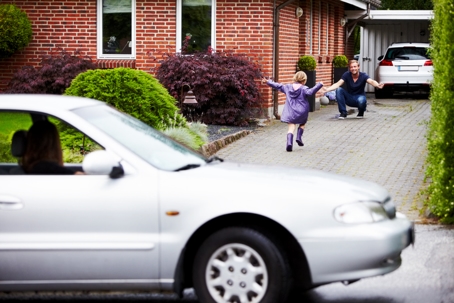When two people are divorced, they will no longer be a couple. However, if they have children, they will always be parents. But how can they care for the child if they can't stand to be in the same room with each other? The State of Texas believes that a child needs the love and support of both parents. In an effort to maintain some form of joint custody, the court may order either co-parenting or parallel parenting.
Co-parenting works when both parents are able to put their bitterness aside and focus on the child. It is a collaborative effort in which they share decision making responsibilities for their child. Together, they will determine such things as who will attend school meetings, extracurricular activities, and doctors’ appointments. Parents are able to communicate personally, as well as through emails, texts, calendars, and apps. This helps each parent stay active in the child's daily life and gives them some flexibility, allowing them to make temporary changes in visitation schedules when needed, such as when a child is ill or for special occasions.
Unlike co-parenting, which centers on communication, parallel parenting focuses on boundaries. In parallel parenting, both parents maintain their own separate households and set their own house rules with no input from the other parent. It depends on a strict parenting plan that addresses such things as
- Managing child-related expenses
- Times, dates, and locations for pick-up and drop-off
- Custody schedules, such as school schedules, holidays, and vacations
- Acceptable forms of communication, such as texts, emails, or apps
Once this parenting plan is agreed upon by the court, both parents must abide by it. Otherwise, there will be no more contact between them.
On the plus side, co-parenting allows the child to spend more time with their parents, and parents get to spend more time with their child, as well. Parents are better able to share in the financial responsibilities of raising the child. One parent may carry the child on their insurance, while the other can contribute to the overall family income, which allows the child to have access to better daily health care. It might also allow the child to participate in extracurricular activities and purchase more school supplies. Also, the child is able to see extended family on both sides more often. However, even in co-parenting, parents may still have to work to suppress their anger and may simply argue over details when the child is not around. Some parents may have to turn down new jobs or promotions because they would be required to travel or even relocate.
While parallel parenting may seem harsh, it does have its good points, such as reducing conflict between parents. This makes their homes more comfortable and the child is happier during their visits. Setting clear boundaries keeps one parent from “inching into” the other's time or events. Like co-parenting, it allows them to stay active in their child's daily life as they work through their issues. On the other hand, it can create problems with inconsistent routines between houses, since neither parent has to consult the other when establishing rules. Important dates might get missed if they weren't dealt with on the original parenting plan. Finally, there will come a time when the parents will have to communicate in front of the child and putting it off won't help.
Most parents want what's best for their child. Whether speaking or not speaking, they can work together on some level to create a loving, stable, and supportive environment for them to help them grow and thrive.

